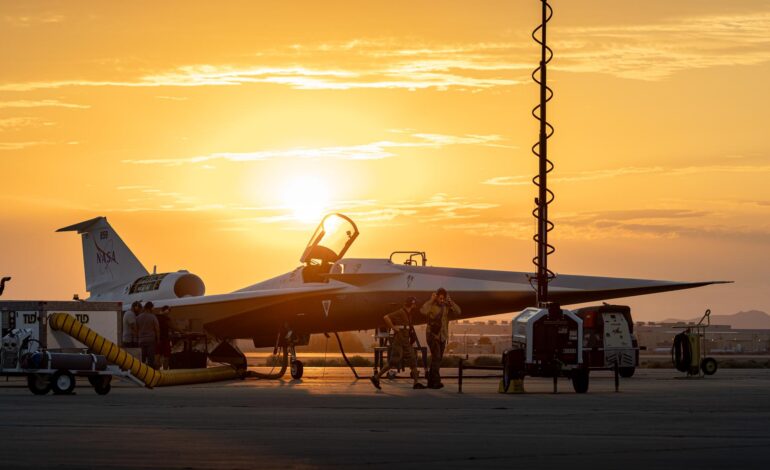NASA’s X-59 Prepares for Historic First Flight in 2025

Preparations are underway for the first flight of NASA’s X-59, a groundbreaking quiet supersonic research aircraft. Scheduled for later this year, the X-59 is the centerpiece of the agency’s Quesst mission, which aims to demonstrate the feasibility of quieter supersonic flight. The aircraft recently completed low-speed taxi tests at Lockheed Martin’s Skunk Works facility in Palmdale, California, on July 18, 2025.
As part of final preparations, the X-59 will undergo medium- and high-speed taxi tests. These tests are critical for assessing the aircraft’s handling characteristics at increased ground speeds. The team will evaluate braking, steering, stability, and sensor performance, ensuring that all systems function effectively, particularly since the cockpit lacks a forward-facing window.
The initial flight will mark the beginning of a crucial phase in flight testing, focusing on verifying the X-59’s airworthiness and safety. The aircraft is expected to reach speeds of approximately 240 mph at an altitude of about 12,000 feet. This one-hour flight will commence from Palmdale and conclude at NASA’s Armstrong Flight Research Center in Edwards, California. During this time, the X-59 team will closely monitor several key systems, including engine performance, stabilization, and instrumentation.
The Quesst mission endeavors to transform the experience of supersonic flight by reducing the loud sonic boom to a quieter “thump.” The successful demonstration of the X-59’s airworthiness is essential for collecting data that will inform potential new noise regulations for supersonic commercial flight over land, a significant step towards the future of air travel.
NASA test pilot Nils Larson recently conducted ground tests, further solidifying the X-59’s readiness for its upcoming flight. These preparations coincide with the celebration of National Aviation Day, a time to reflect on the legacy of aviation pioneers while pushing the boundaries of modern air travel.
The X-59’s journey represents a collaborative effort between NASA and Lockheed Martin, showcasing the potential for innovation in aeronautics. As the aircraft approaches its inaugural flight, the world watches closely, anticipating advancements that could reshape commercial flight for generations to come.






